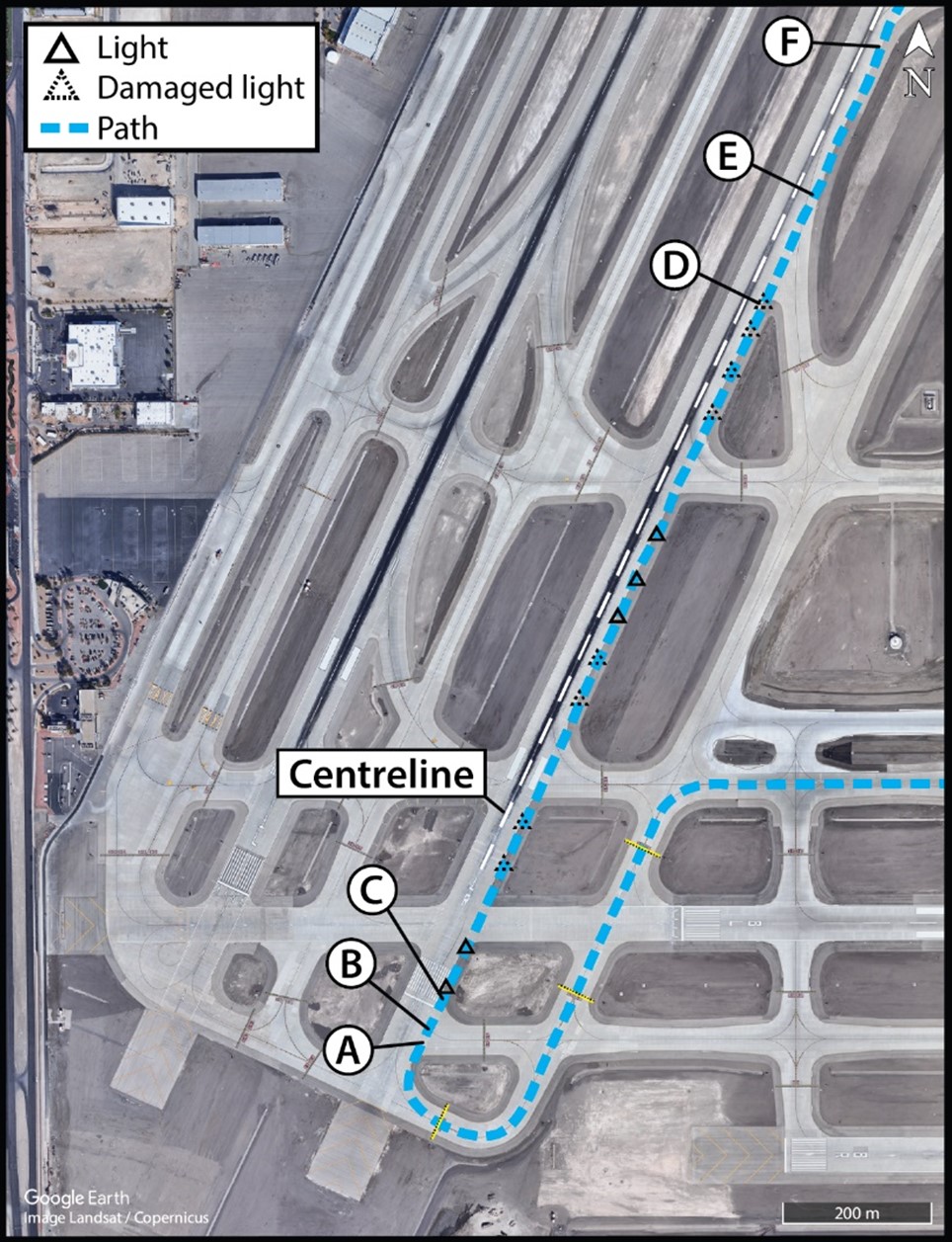
ASN Wikibase Occurrence # 308836
This information is added by users of ASN. Neither ASN nor the Flight Safety Foundation are responsible for the completeness or correctness of this information.
If you feel this information is incomplete or incorrect, you can submit corrected information.
| Date: | Thursday 16 February 2023 |
| Time: | 18:25 |
| Type: |  Boeing 737-7CT (WL) |
| Owner/operator: | WestJet |
| Registration: | C-GWCN |
| MSN: | 34157/1818 |
| Year of manufacture: | 2005 |
| Total airframe hrs: | 56352 hours |
| Engine model: | CFMI CFM56-7B24 |
| Fatalities: | Fatalities: 0 / Occupants: 114 |
| Aircraft damage: | Minor, repaired |
| Category: | Incident |
| Location: | Las Vegas-Harry Reid International Airport, NV (LAS/KLAS) -
 United States of America United States of America
|
| Phase: | Take off |
| Nature: | Passenger - Scheduled |
| Departure airport: | Las Vegas-Harry Reid International Airport, NV (LAS/KLAS) |
| Edmonton International Airport, AB (YEG/CYEG) | |
| Investigating agency: | TSB |
| Confidence Rating: |
A WestJet Airlines Boeing 737-700, was operating as flight WJA1447 from Harry Reid Intl. Airport (KLAS), Las Vegas, Nevada to Edmonton Intl. Airport (CYEG), AB, with 5 crew and 109 passenger on board. During the night take-off on Runway 01R, the aircraft struck 6 runway edge lights along the right side of the runway. The flight crew were unaware of the collisions and continued to destination and landed without issue. 7 days after the occurrence, the KLAS airport authority notified WestJet of the damage to the runway edge lights and in turn, WestJet notified the TSB.
The day after the occurrence, company maintenance noticed minor damage to both nose wheel tires and replaced both tires. There was no other damage to the aircraft noted.
Findings as to causes and contributing factors
- The first officer’s high workload contributed to his attention being focused primarily on managing tasks within the cockpit as the aircraft was taking position on Runway 01R. As a result, he was unable to provide additional support in visually aligning the aircraft on Runway 01R in the proper position.
- Influenced by his perceived time pressure to depart, the captain’s attention was focused primarily on the first officer and setting take-off thrust. This diverted his attention away from laterally aligning the aircraft on the runway.
- When the aircraft was turning right to establish the runway heading in preparation for takeoff, the captain perceived the right runway edge marking as the runway centreline and the right runway edge lights as the centreline lights. The limited and ambiguous visual cues that were available likely met the captain’s expectation that the aircraft was aligned on the runway. As a result, the aircraft was aligned laterally with the right edge of the runway, rather than with its centre.
- Due to the reduced visual cues and the inadequate amount of time to fully process his environment from the moment he assumed control of the aircraft, the first officer did not recognize that the aircraft was aligned with the right edge of the runway when he took control of the aircraft during the take-off roll.
- The aircraft’s contact with the 8 runway edge lights was not recognized by the flight crew because they perceived the sounds and vibrations to be normal contact with the embedded runway centreline lights and consequently continued with the departure.
Findings as to risk
- If airport operators incorporate only the minimum marking and lighting required by regulation and do not adopt optional enhanced visual aids where possible, there is an increased risk that pilots will not have a full awareness as to where they are on airport surfaces.
- If runway inspections cover only the centre portion of a runway, there is a risk that debris on the edges of the runway will go undetected.
Accident investigation:
 |
|
Sources:
TSB
https://www.flightradar24.com/data/aircraft/c-gwcn#2f39eacf
Images:

Figure: Google Earth, with TSB annotations
Revision history:
| Date/time | Contributor | Updates |
|---|---|---|
| 23-Apr-2024 14:50 | ASN | Updated [Narrative, Accident report] |
| 23-Apr-2024 14:51 | ASN | Updated [Photo] |
Corrections or additions? ... Edit this accident description
The Aviation Safety Network is an exclusive service provided by:


 ©2024 Flight Safety Foundation
©2024 Flight Safety Foundation